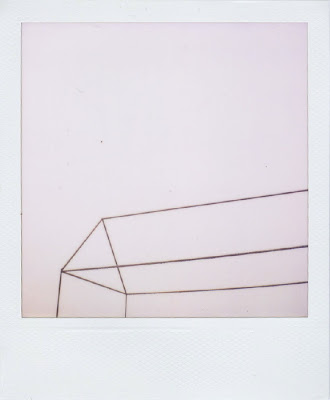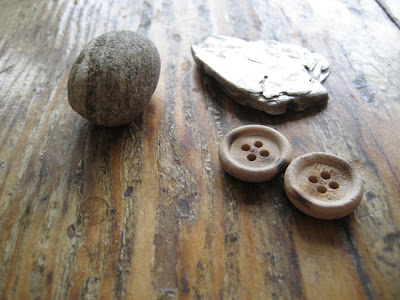Back in April, word of a spring sheep shearing nearby (in Florida!) reached my perked ears. Hands hungry for wool and feet inclined to go, I followed the directions given to me, and found myself unexpectedly at an 1840's homestead and festival. Fortunately persons with a drop spindle tucked under her arm were welcomed easily. So happily I sat for two days straight to glean from the people around me, as buttermilk biscuits and potato stew was cooked on a wood stove, water pumped, a log shed built, rope coiled, yarn spun, rag rugs and baskets woven, a native shared edible and medicinal plant lore, and there were even a few sheep sheared. Some of the wool even came home with me. My mind is still churning with it.

Gulf Coast Native Sheep are descendants of 1500s Spanish stock that developed into a tough breed resistant to Southeastern heat and internal parasites. As a result they were a favorite of southern homesteaders. Their heads, legs and bellies are bare to keep cool. They are listed on American Livestock Breeds Conservancy’s conservation's priority list as critical which means there are fewer than 200 annual registrations in the United States and estimated global population less than 5000. These days old lambs just added to that list.
 things noted:
things noted:
-wool can be spun unwashed "in the grease" to make waterproof clothing
-one of the fleeces brought home is from the ewe that recently birthed twins, it's significantly greasier than the ram or the other ewe's
-learned to make cordage from daylily leaves and agave, I later tried Spanish moss
-moss was once used to stuff horsehair furniture, and woven into horseblankets during the Civil War
-spanish moss may have use as a dye material (this is still unconfirmed)
-a woman raised angora rabbits that sat in her lap as she plucked hair and spun it on the wheel
-cotton was largely a cash crop for Florida homesteaders to be sold to the northern industries or exported to Britain . For themselves they raised sheep and flax to make clothing.
Perhaps the most striking bit of information:
Making clothing was a three year affair- the first year after the (up to six) sheep were sheared the wool would be skirted (manure laden bits were thrown in the garden for fertilizer) washed and carded and spun (usually with a drop spindle). The second year it was woven. The third year it was made into clothes and embellished. All the while raw wool was piling up in the attic to be processed in the next cycle.
Clothes had value far beyond what they do today. How many shirts and socks have I thrown away because of a small hole worn in the fabric? How easily would I have abandoned it if I spent three years making it? How did waste apply in the three year cycle? I imagine by the time cloth reached the trash pit it had gone from adult clothing, to children's clothing, to quilts, to patches, to rags, to wicks, to nothing but a few thread bits. How does this knowledge explain the divide between the wearer today and the wearer 150 years ago. We live in a culture of extreme wealth and extreme waste. How do I address this in my own life? My hands tell me to make art that addresses these issues while also taking time to darn my socks. Aren't they so very close to the other?
As I sit in my studio making wool thread I wonder if what I am doing is craft or art. What is my definition of craft vs. art? What are the elements that determine Craft or Art? How have they changed in the last 5, 10, 50, 100 years?
I believe what I do with the thread will determine whether or not it will be categorized under "craft" or "fine art". I am not SlowFood, but SlowArt.
I am drawn to the local, doing everything processes; growing my own cotton and flax, learning the local dye plants, and gathering wool from the area are just a part of it. It is the minimal that forces careful re-observation of the complex.




 10
10







 April planting of five Upland Cotton seeds.
April planting of five Upland Cotton seeds. Some prepare all those fibers before spinning by removing the seeds one by one and combing the fibers to roll them into little pencil sized punnis.
Some prepare all those fibers before spinning by removing the seeds one by one and combing the fibers to roll them into little pencil sized punnis.


 things noted:
things noted:



 But oh I became a scientist before I was a weaver. See that tiny weaving in front? It was a study from a washcloth with selvedge on all four sides, beginning with the weaving the tool was created sight unseen but signature present. Study revealed it was woven on a simple frame loom warped in a particular way not like an S but looped in interlocking Os. My little weaving came to be from nails in a board.
But oh I became a scientist before I was a weaver. See that tiny weaving in front? It was a study from a washcloth with selvedge on all four sides, beginning with the weaving the tool was created sight unseen but signature present. Study revealed it was woven on a simple frame loom warped in a particular way not like an S but looped in interlocking Os. My little weaving came to be from nails in a board. 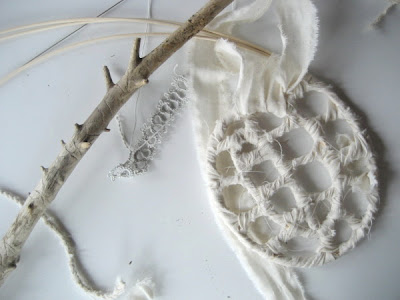 Tried traditional Andros Island-style coiling not with palm but reed and muslin,
Tried traditional Andros Island-style coiling not with palm but reed and muslin,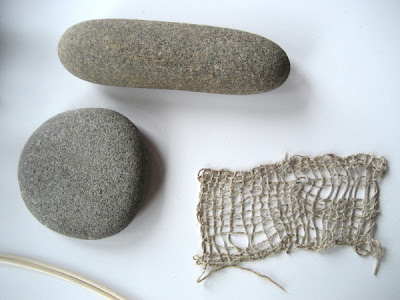 before returning to the simple loom weaving cloth of linen and spanish moss.
before returning to the simple loom weaving cloth of linen and spanish moss. 

 How might spanish moss be when untangled, twisted, tied, corded, partially spun or dipped in ink, wet and wound aroud a stone, or felted in wool? All new vocabulary for new language.
How might spanish moss be when untangled, twisted, tied, corded, partially spun or dipped in ink, wet and wound aroud a stone, or felted in wool? All new vocabulary for new language. 

 At Haystack we were given the chance to prepare bark strips for weaving. One of the maintence men procured a freshly cut spruce pine to use. Using a sharp pocket knife, we scored strips along the bark then pried sections up and running our hands down the moist crevice between the trunk and supple bark to peel it, gently tugging when reaching the base of a branch. The feeling of skinning something freshly dead nestled in my heart and kept my actions aware and careful. My hands were soon soaking wet and mildly sticky.
At Haystack we were given the chance to prepare bark strips for weaving. One of the maintence men procured a freshly cut spruce pine to use. Using a sharp pocket knife, we scored strips along the bark then pried sections up and running our hands down the moist crevice between the trunk and supple bark to peel it, gently tugging when reaching the base of a branch. The feeling of skinning something freshly dead nestled in my heart and kept my actions aware and careful. My hands were soon soaking wet and mildly sticky.
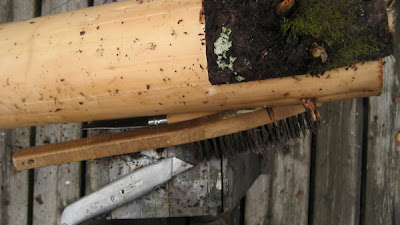




 and wove with something precious.
and wove with something precious.





